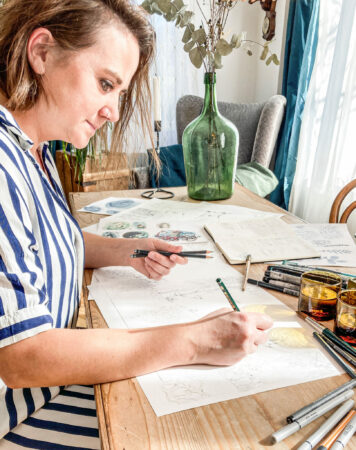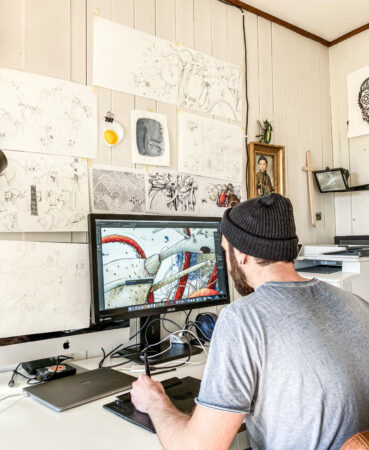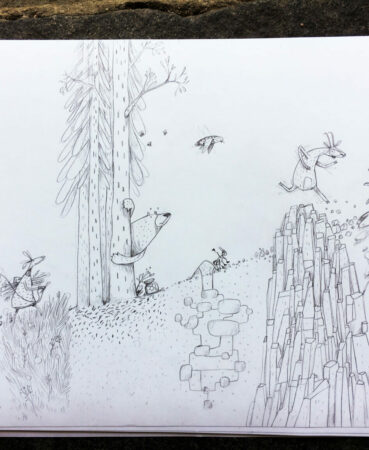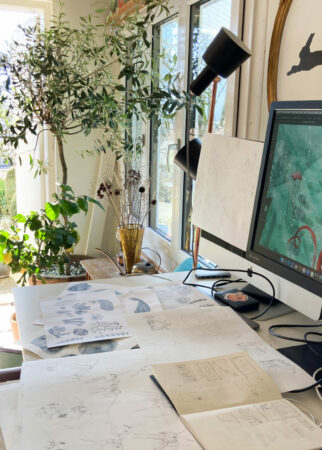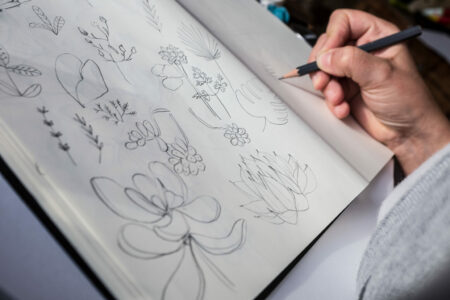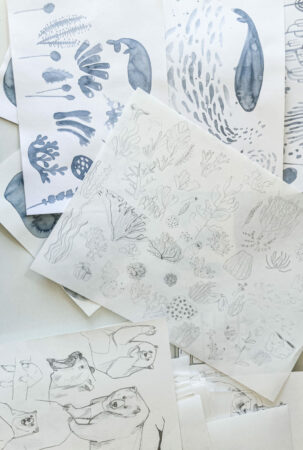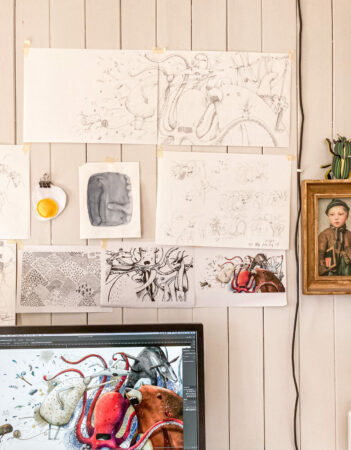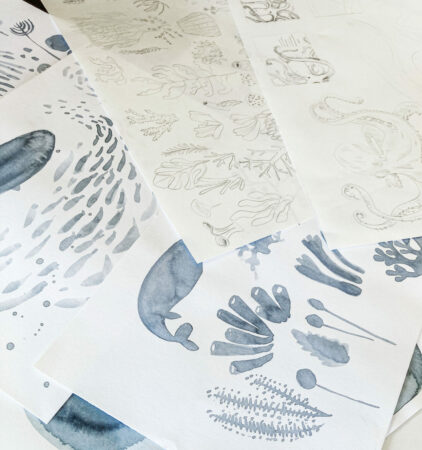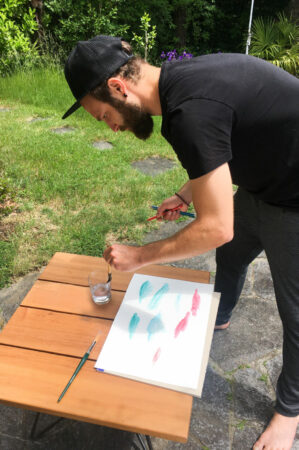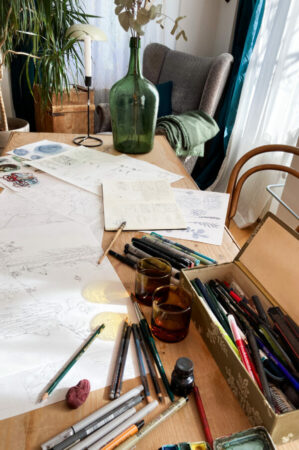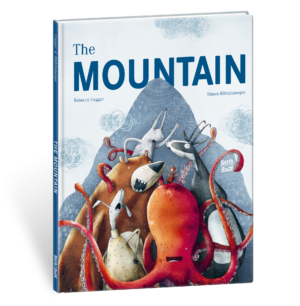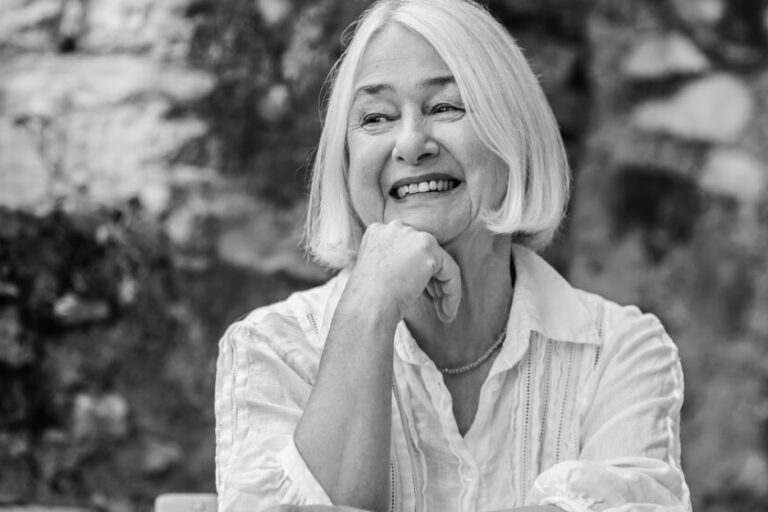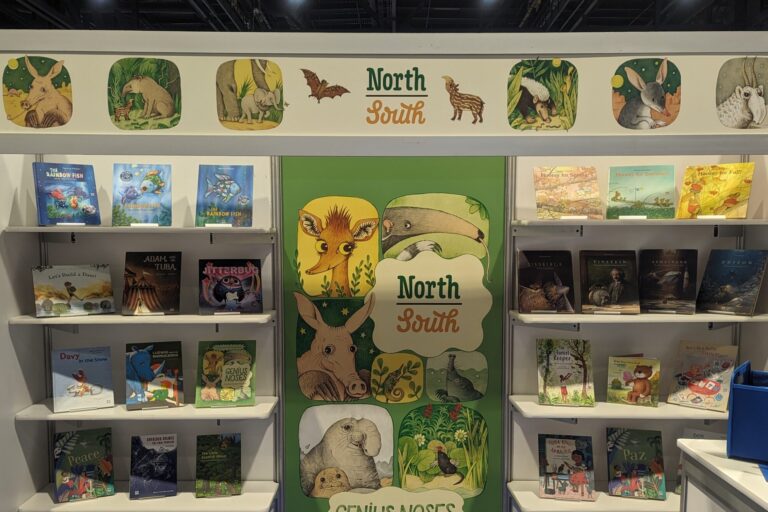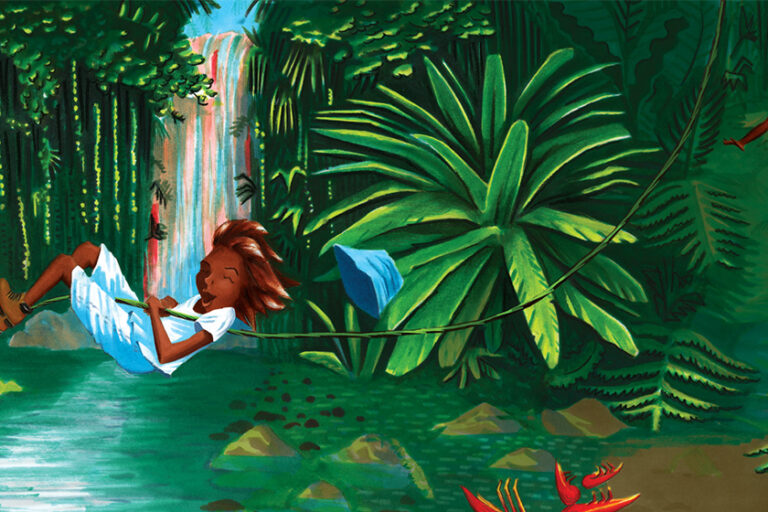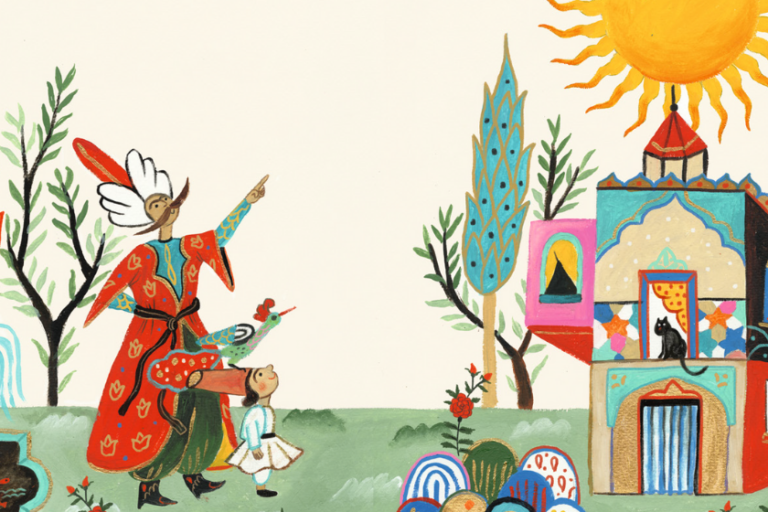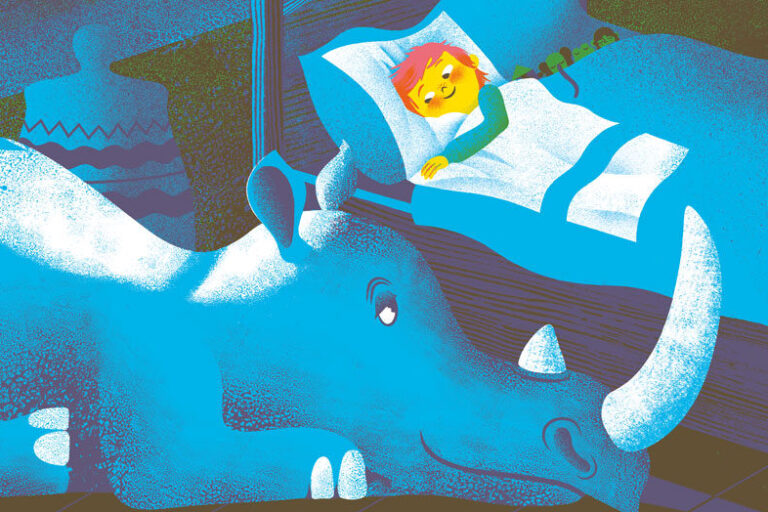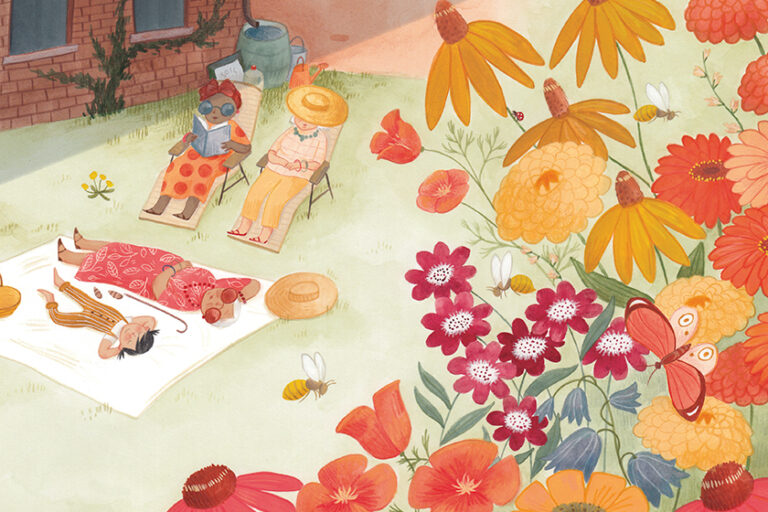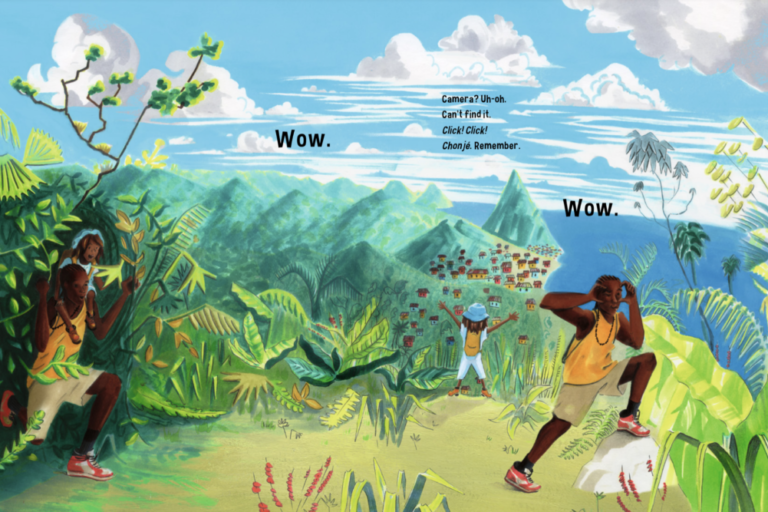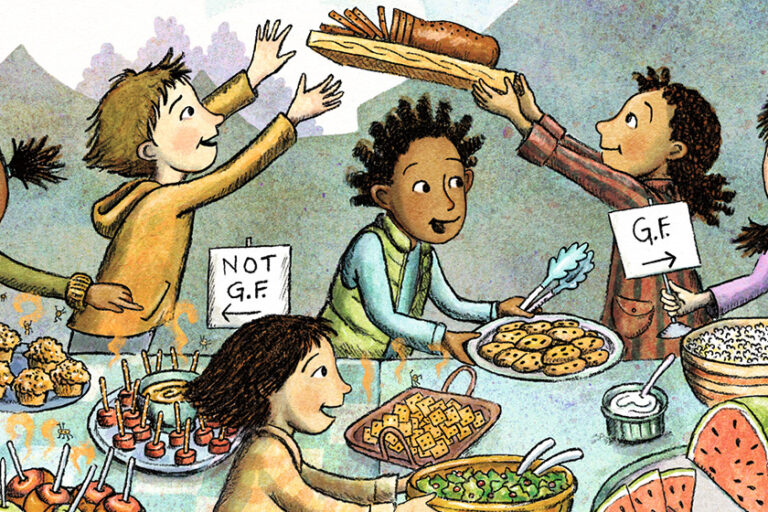The World Is Big Enough for Us All
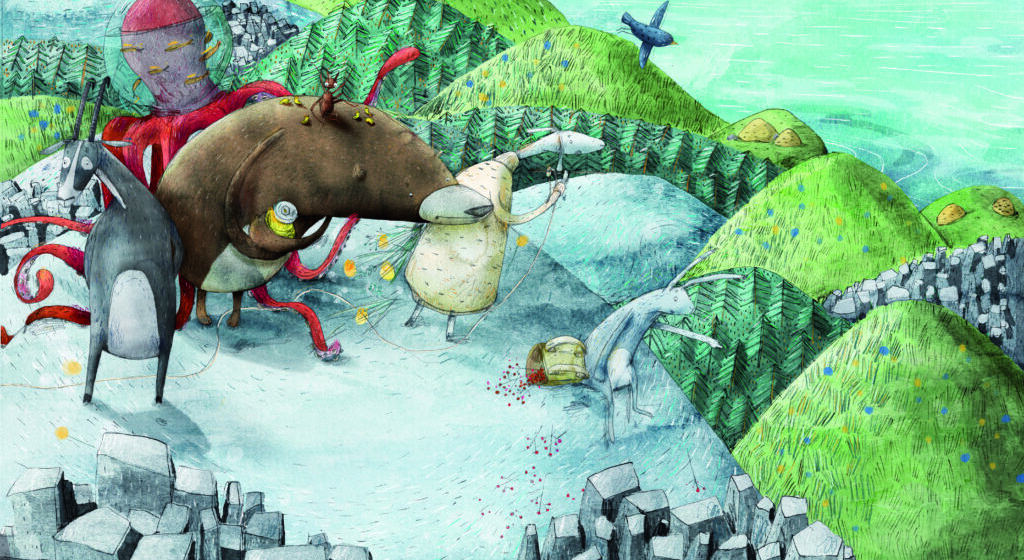
Interview with author/illustrator partners Rebecca Gugger and Simon Röthlisberger, creators of Ida and the Whale and The Mountain
Rebecca Gugger and Simon Röthlisberger work together on all aspects of their children’s books, and they are also partners in their personal lives. Their first book with NorthSouth, Ida and the Whale, was a 2019 IndieNext pick. In this interview they discuss the meaning behind The Mountain, how they collaborate (day and night!) to bring text and pictures together, and their own guiding “migratory bird.”
How did the story of The Mountain come to you in the first place?
Simon: The starting point was the subject of opinions—ours and those of other people. It happens all the time: different viewpoints clash, and everyone passionately defends their own and believes that theirs is correct. So who is right?
Rebecca: It’s this powerful need that people feel to assert themselves.
Simon: Right from the start, the mountain as a solid object seemed to us to be a good symbol. From up above, you have an overview, and from there all different opinions can be seen as relative.
Rebecca: We had long discussions about this image. The mountain as a metaphor for an opinion, a belief, an object that everyone will regard as “real and true.” I stand on one side of the mountain, and so I only see one side of it, whereas you are on the other side and you see something quite different. Therefore we’ll disagree. But in fact neither of us is wrong—we’re both looking at the same mountain. And although all of us live within our own limited radius, from up above we can get a 360-degree view of everything. This distance can then create a new way of coming together. Through the example in the story, I can see from above how the small details combine to form the big picture. I recognize my own small world as well as that of other people—and then I understand how close these worlds often are to one another.
This image [pictured at the top of the blog] is the basis of your book. It features six animals. Each of them has its own view of the mountain, shaped by its own way of life, and so they start to quarrel. Until finally the bird contributes the all-important overview. Ultimately, all the perspectives are true. What does this mean to you?
Rebecca: Tolerance. The fact that other ways of looking at things can enrich your own view of the world.
Simon: And so you can see beyond your own personal limitations.
Rebecca: Exactly. You can open up your own world by incorporating new perspectives. There are so many different ideas apart from my own, and they’re allowed to be different, though I’m also allowed to have my own opinion. The world is big enough for us all.
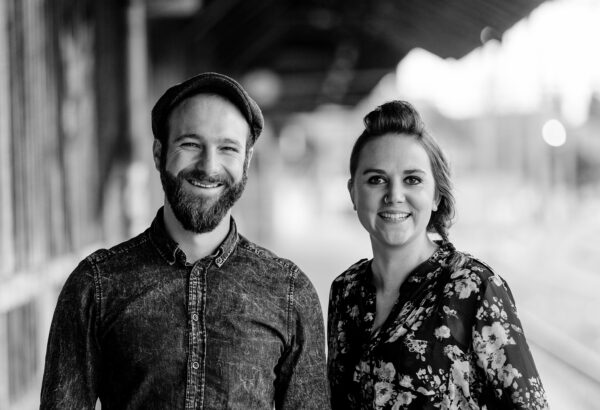
As regards different perspectives and opinions, the two of you work together on your books. How does that go?
Rebecca: We each have our own style and way of thinking. In our first book, Ida and the Whale, the collaboration was a kind of experiment. How should we do this and that? Where’s the common ground? Will it work at all? In fact, as it turned out, it all worked very well.
Simon: It’s a constant, creative to-ing and fro-ing. With The Mountain, this lively exchange of different ideas and the desire to create a new picture book finally led to the story itself.
Rebecca: As we know each other so well, the interaction between us happens almost automatically.
It’s like a plant growing in all directions at the same time.
Rebecca Gugger
So how do the text and the pictures develop?
Simon: We do it all together, as a single unit. Text and pictures are a collaboration—the two levels of presentation aren’t separated. We have both text and pictures in our minds at the same time. We philosophize and discuss the content, and as we do so, we draw a few sketches. It’s a kind of holistic approach.
Rebecca: That’s right. It’s like a plant growing in all directions at the same time.
Simon: But it’s also a plant in which one stage leads to another. We begin with one word, and move from there to the next.
With the text I can imagine a sort of ping-pong, but how can you do that concretely with a picture?
Rebecca: We draw the rough sketches and storyboard together. And we ask ourselves: How might we structure the final composition, and what will this world and its characters actually look like? It’s all discussed. Then I get more involved with the drawing, whereas you focus more on the colors, though you also join in with the drawing.
Simon: It’s difficult to keep the different parts of the process separate from one another.
Rebecca: But you’re more at home with the digital side of things than I am.
Simon: Yes, I see things more from the perspective of graphic design and coloring, while you’re more concerned with the draftsmanship.
How long did it all take?
Rebecca: After all the preliminary work, the storyboard, the sketches etc., we went off to a cottage in the countryside for two weeks. That had worked very well for us when we created Ida.
Simon: We need the storyboard as a guide, and then we work round the clock on the project for two weeks.
Rebecca: It’s all a bit much really. (She laughs). It’s a lovely time, but very intensive. Daytime and nighttime keep shifting, and we each have our own rhythm. We’re totally immersed. And also we love working outside. In any case, I need lots of fresh air when I’m working! Most of the project is finished during this period away from home, but afterwards there are still many more hours to be spent on little adjustments to text and pictures, and putting in all the finishing touches.
What techniques do you use?
Rebecca: First of all pencils, crayons and watercolours. When all the basic structures are down on paper, we scan them and adjust them on the computer. It’s always a hybrid technique—analog and digital. The haptics of the analog line is very important for us, but there’s never a completely analog picture. It finishes up as a collage.
Simon: It’s not supposed to look perfect. We just like the special texture of analog pencil lines.
Where does your inspiration come from?
Rebecca: From life itself, and the people around us. We can be inspired by little incidents when we go shopping—a scene that sticks in the memory, characters that suddenly enter your life, chance meetings. I’m interested in community life—wherever you find groups of human beings.
Simon: And of course, nature—the colors, shapes, patterns, and structures.
Rebecca: Yes, especially with animals.
After the success of Ida and the Whale, have you felt pressured by people’s expectations?
Rebecca: With Ida we were completely free to do what we liked. With The Mountain there was always the question at the back of our minds: Is it any good? But both of us also work in other areas of visual art, and so we tried to approach this project pragmatically, as if it were just one more commission, and we devoted ourselves to it in that frame of mind.
Simon: Fortunately, our main feeling was one of sheer joy at working on the book and creating something new! Now we’re very keen to find out how it’ll be received by our readers.
What are the differences between the two books?
Rebecca: With The Mountain we wanted to create something short and pithy. Ida is more poetic and expansive—it touches on many different subjects. Here we’re focusing on a single theme.
Simon: Ida is a quieter book. With The Mountain we wanted to tackle the subject head on, but in a humorous style—although we didn’t want to completely lose sight of its serious side.
Rebecca: There’s a powerful rhythm running through the book. Each animal makes its own mark, full-sized, loud and clear. Then we see the world it lives in. And straight after that, we move to the next animal. The structure is simple. This repetition was deliberate, and its simplicity also produces the humor.
Simon: Initially, we wondered if there should be more of a narrative, but we soon decided on this clearer structure, with the direct switch from one animal to the next. This strengthens and emphasizes the opinion delivered by each animal.
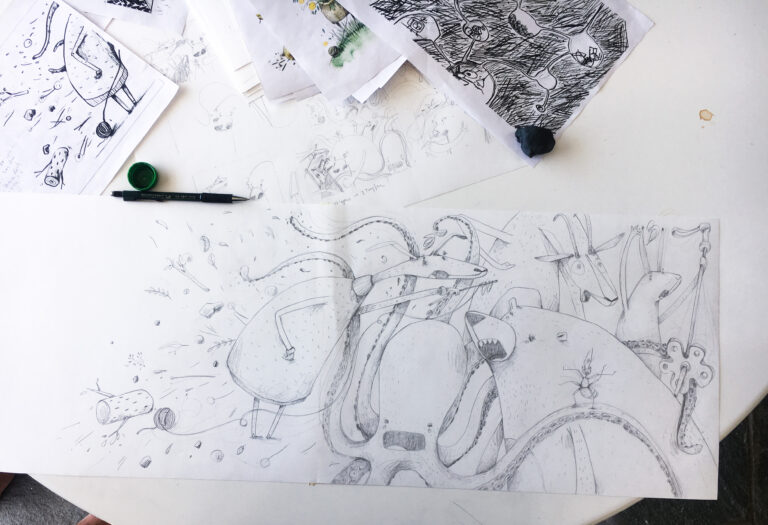
What do you think makes for a good illustrated children’s book?
Simon: Simplicity—when difficult subjects can be presented in a manner that’s easy to understand.
Rebecca: And humor. There is a subtle way to present a subject—even in drawing. You don’t have to put everything down on the paper. Gaps can also convey contents. The subject should be brought into focus through subtle, comical touches. These in themselves can be loud and forceful or quiet and gentle.
What special features does the book have?
Simon: There are small visual details, for example the little maggot that the ant holds up high on a stick. That will appear again later. Or the river that winds its way through every scene. Or the sheep’s ball of wool, which literally runs like a thread through the whole book.
Why these animals in particular? Among the typical forest and mountain creatures, there’s also an octopus. Why? He’s a bit of an odd one out, isn’t he?
Simon: We had long discussions about which animals we should use and which not. In fact we did sketches of a much wider variety of animals. The octopus naturally makes for a fascinating illustration.
Rebecca: And the very fact that he doesn’t fit in—it makes you stop for a moment when you see him. We really wanted to include an animal that lived in water, and we thought of trout, and also of salmon, which swim upstream and would therefore be able to swim up a mountain.
Simon: We thought of crabs, too…
Rebecca: But in the end we decided on the octopus. It was important for us to include some kind of outsider.
The black bird helps the other creatures to see the mountain from a distance. Do you sometimes need a migratory bird yourselves?
Both: Yes, we do!
When was the last time?
Rebecca: It seems to me like every day! It’s always enriching when you’re made to look at your fixed patterns of thought from the outside.
Simon: And you’re frequently my migratory bird!
Rebecca: Thank you. And vice versa.
Is one of you more questioning than the other?
Rebecca (putting her hand up and laughing): I’m the bigger doubter during the creative process.
Simon: Yes, but not all the time.
REBECCA: No, no. And when we do doubt, luckily it’s not always at the same time and it’s usually about different things. That’s the lovely thing about working together. You can each help the other to find your way out of mental dead ends. You soon start asking yourself: Is that the right way, does it fit the bill, does it make sense? You need the other person to clear your mind by asking: What’s it about? What are we focusing on?
The nicest effect of all is if the book provides a kind of playful way to make people think new thoughts about life, relationships, other people, and their own ideas.
Rebecca Gugger
What effect do you hope the book will have?
Simon: We don’t want to moralize. We want to ask questions and to leave the answers open. We don’t want to supply ready-made solutions.
Rebecca: We find it exciting if a picture book tells a story in which new things can be discovered, but the book also leads readers to ask questions.
Simon: That’s right—it’s good if it leads to a discussion afterwards.
Rebecca: The nicest effect of all is if the book provides a kind of playful way to make people think new thoughts about life, relationships, other people, and their own ideas.
What’s the next thing you’re longing to do?
Simon: Sailing! I’m currently training to get myself an offshore sailing permit. If things go well, I should get it this year.
Rebecca: And more book projects! We have the desire, and it’s still a pleasure. We’ve already got some new ideas—and there’s more to come!
That’s something we’ll all look forward to, dear Rebecca and dear Simon!
